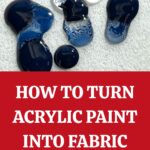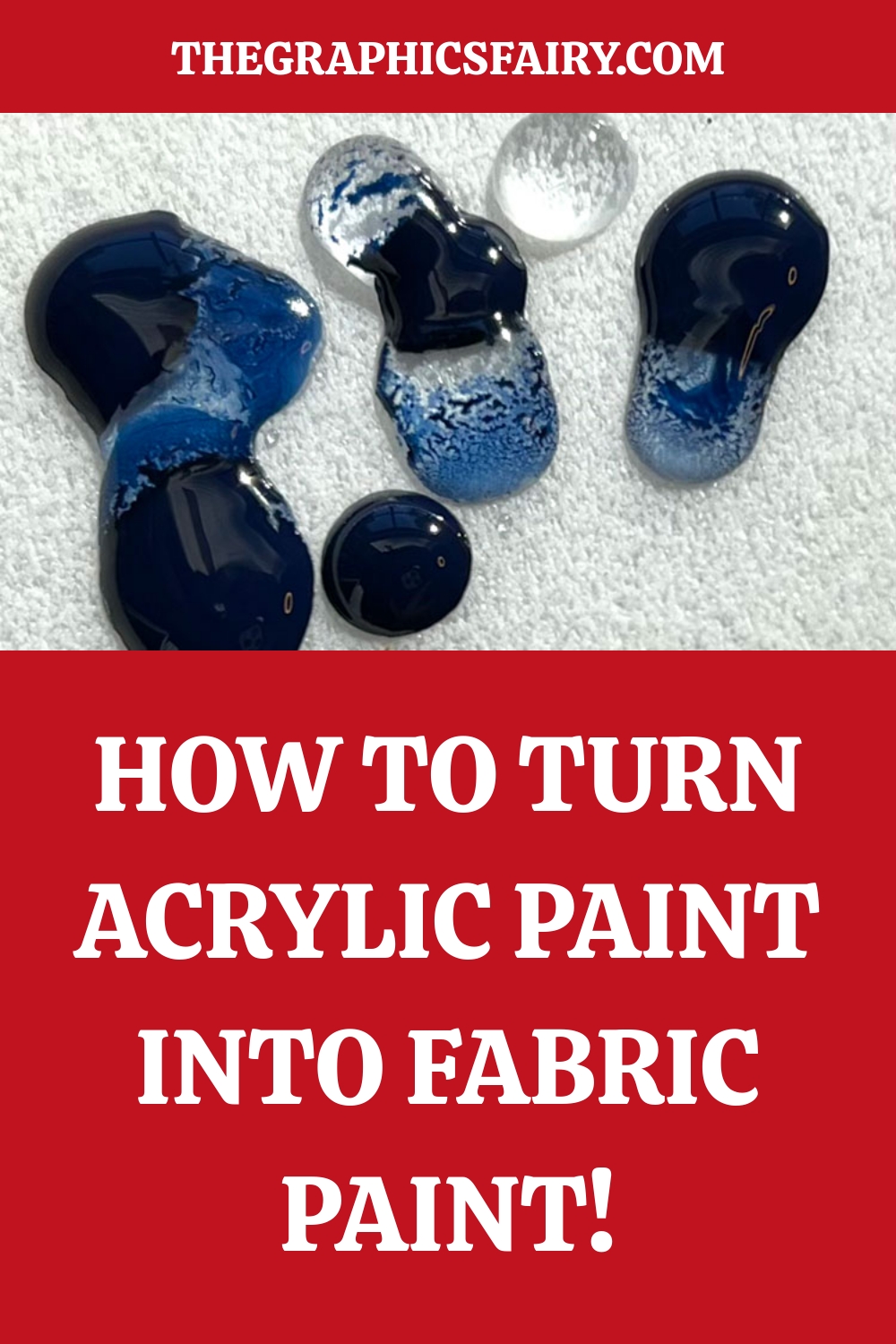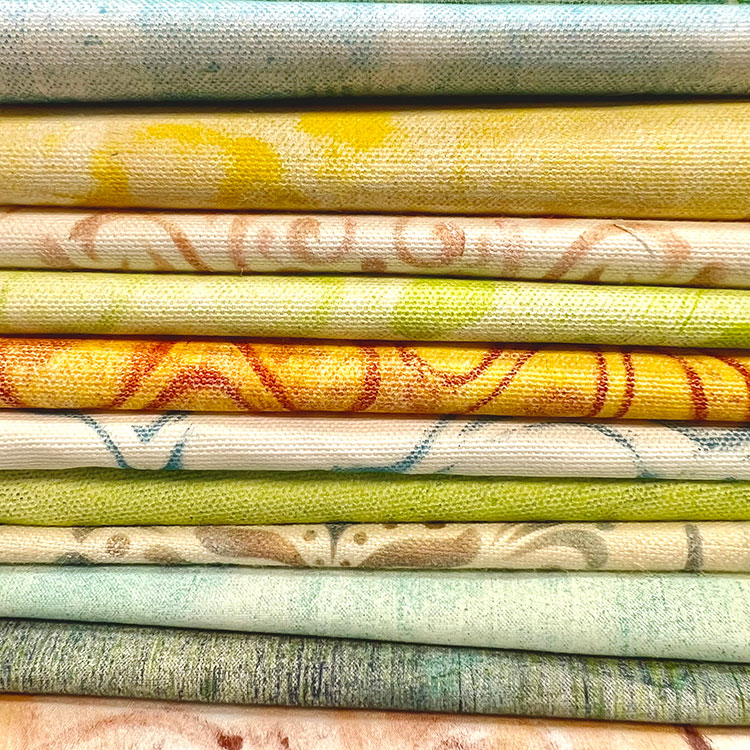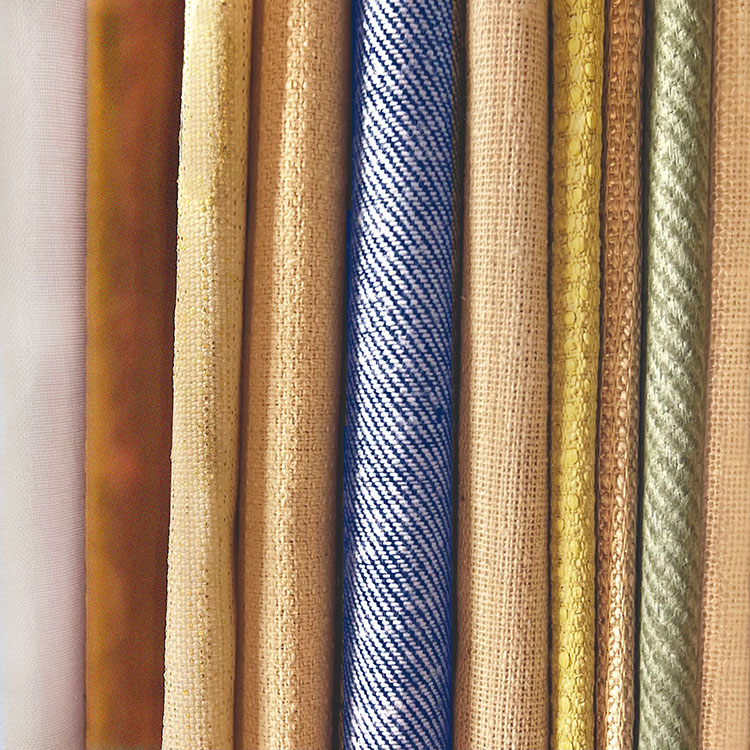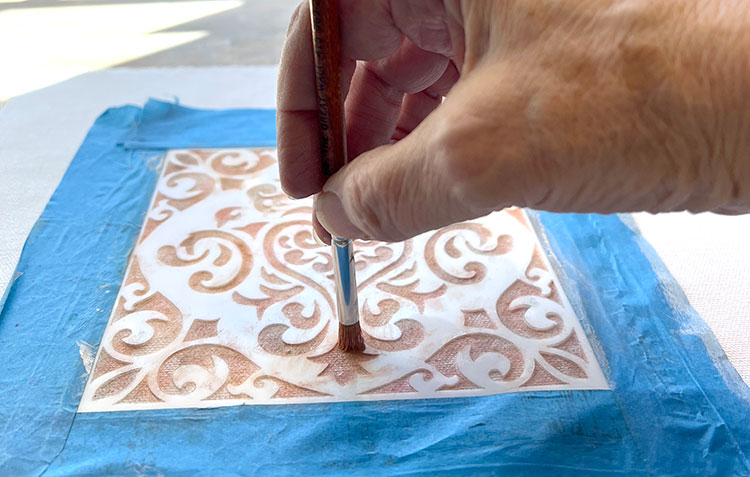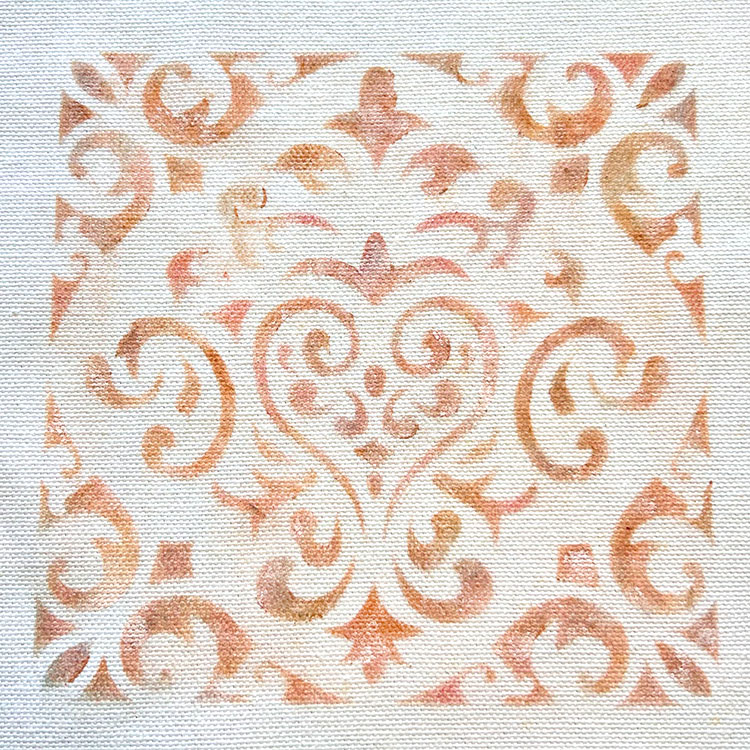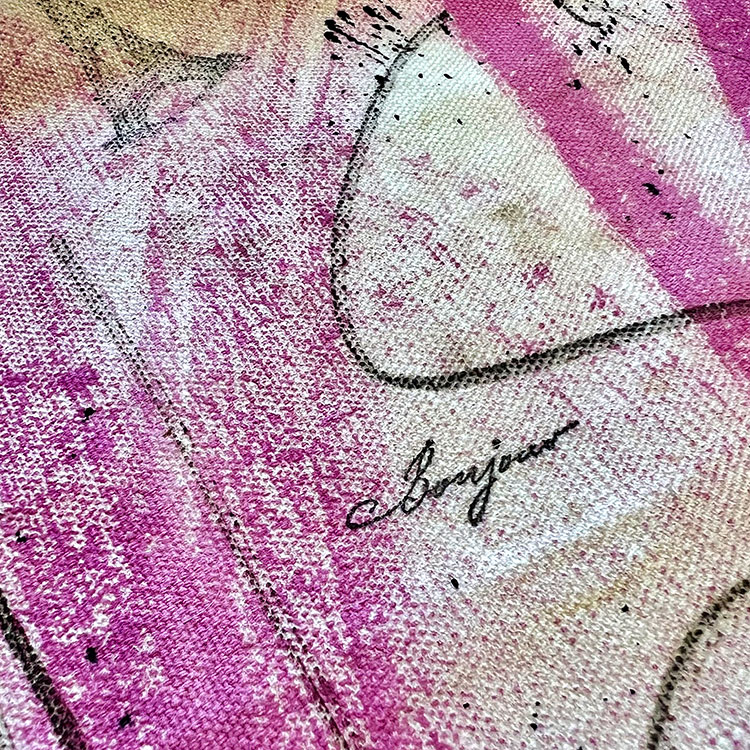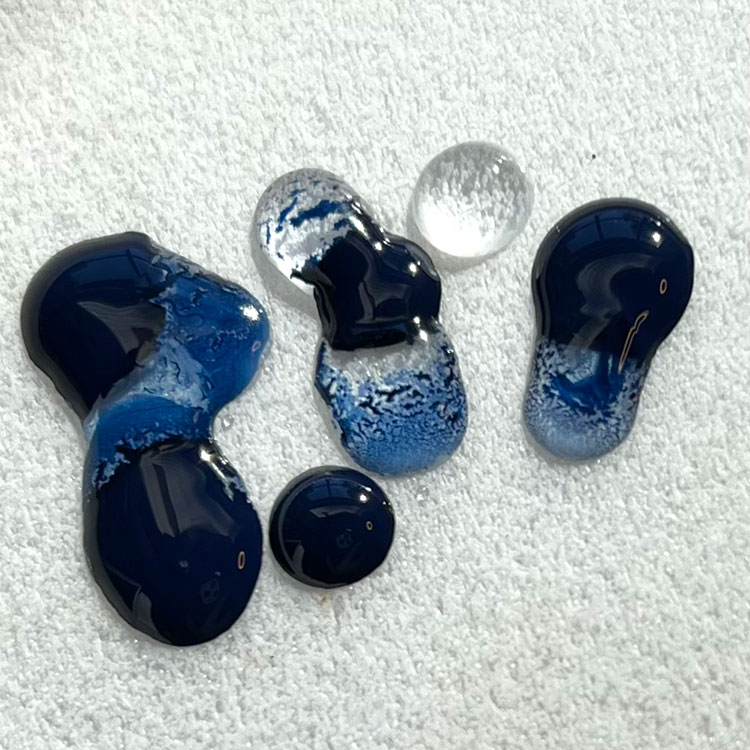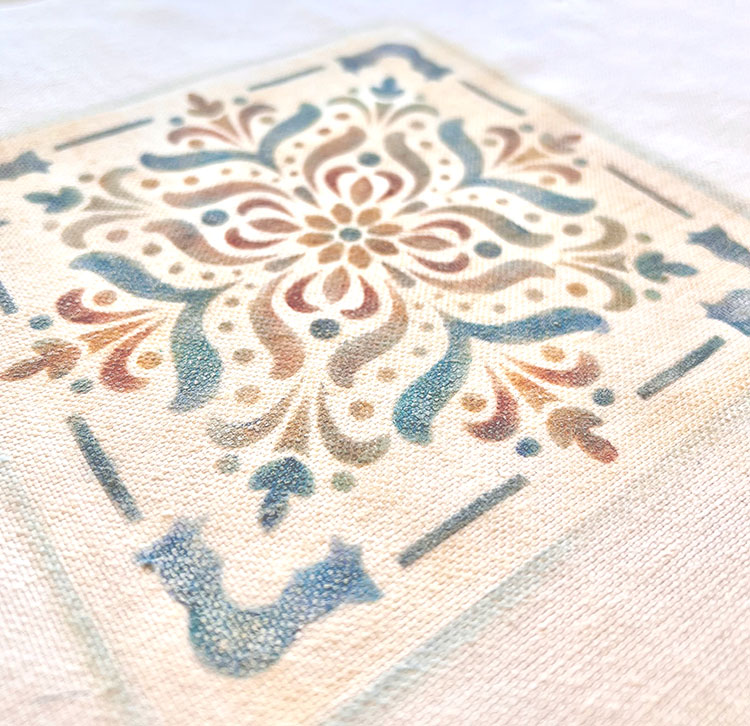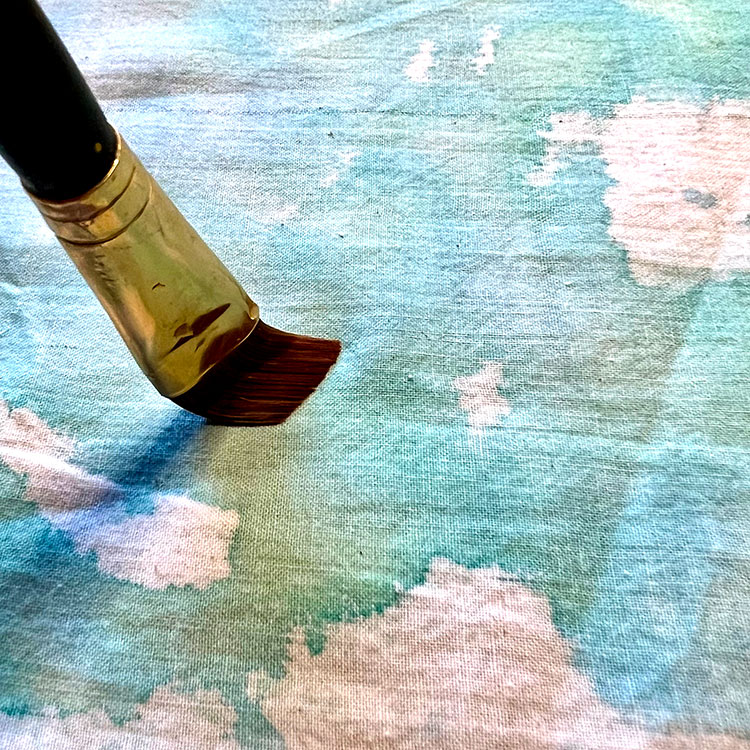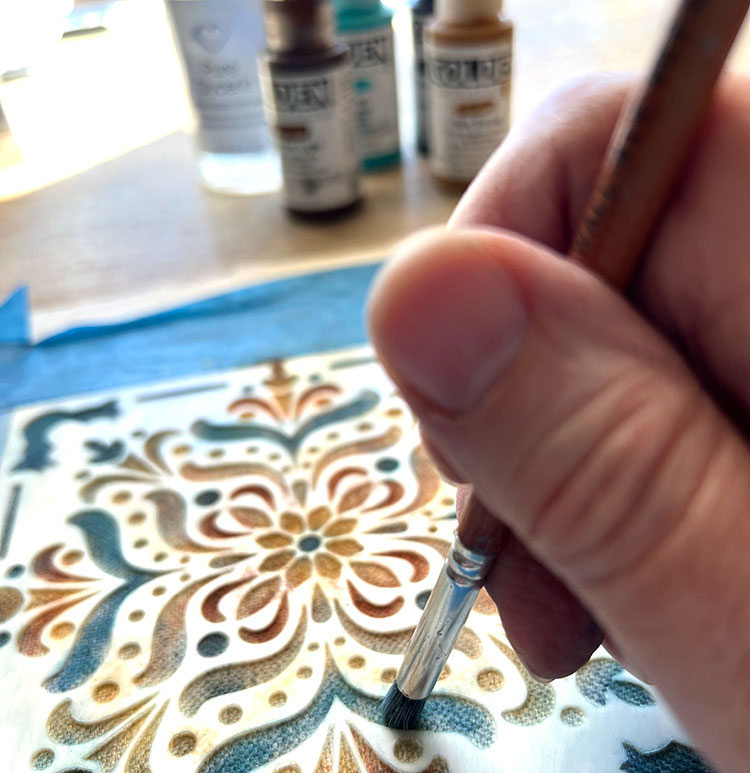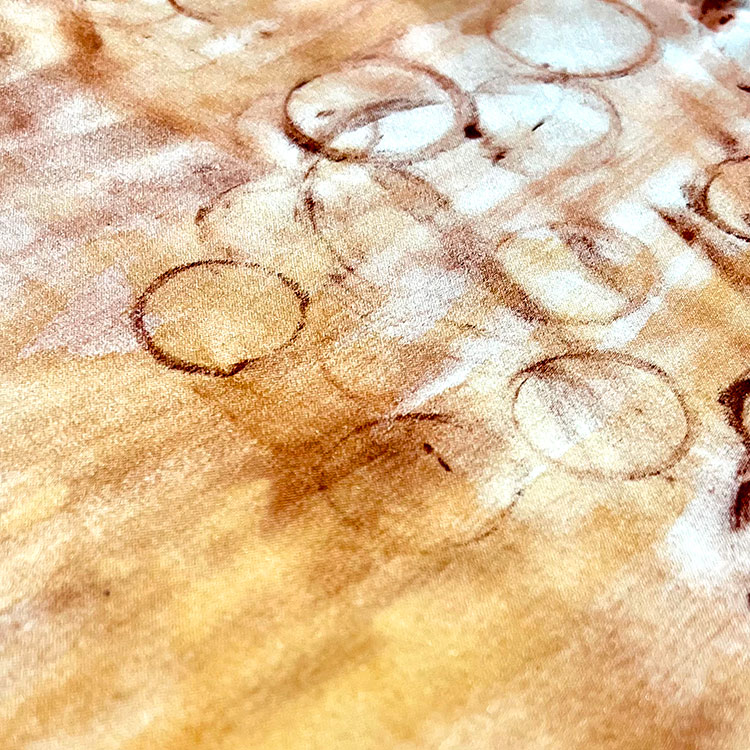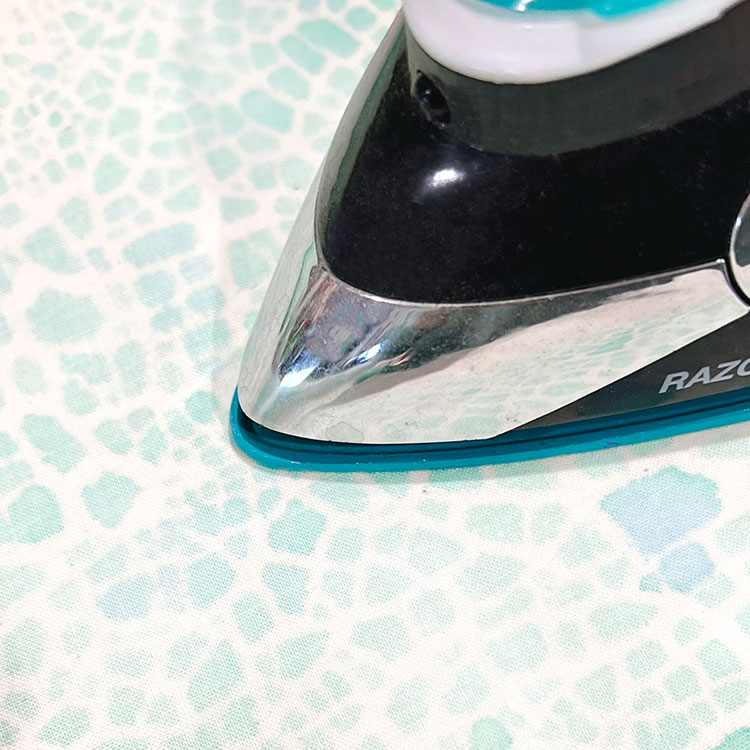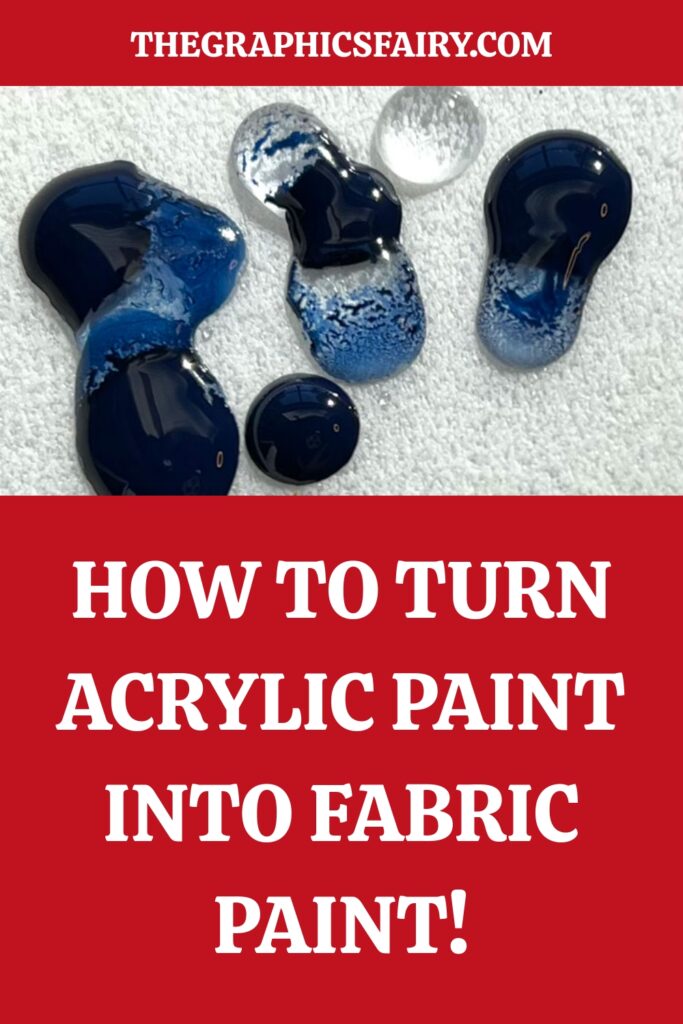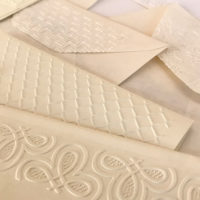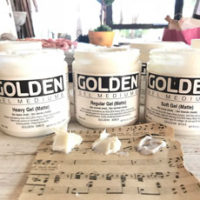How to Turn Acrylic Paint into Fabric Paint
Hello Graphics Fairy creators. Today we will be discovering how to turn acrylic paint into fabric paint. I will be sharing a few of my favorite methods to use inexpensive craft paint to enhance and embellish cloth. We will learn how to use some low-cost everyday items to make a paint that adheres to fabric well and does not make it stiff. Textile painting is a favorite way to take your paper, book, mixed media, Journals and collage art to the next level.
Even a tiny piece of painted cotton, linen, or silk adds a new texture to your layering process.
Fabric Paints versus Acrylics with Mediums
The most commonly used paint for fabric creations is fabric paint. Fabric paint can be pretty expensive, plus there is a limited range of colors to select from. It has a medium included that is pre-mixed into the pigment. Although they work beautifully when applied to many different fabric surfaces, we can easily make something in our studios that does the same thing.
The alternative for painting fabric involves purchasing a bottle of textile medium, or making your own, to combine with acrylic paints. This opens a world of possibilities for you. Additionally, acrylic paint is available in considerably more colors than fabric paint, and if you’re like me you already have a bunch of them in your stash!
We will discuss the options for actually creating your own fabric paint. Generally speaking, there are three ways of making fabric paint using acrylic paints. These are:
- Adding a medium to the paint.
- Adding a combination of ingredients to produce your own ‘medium,’ even if it isn’t technically a medium.
- Adding water to acrylic paint.
I will show you the ways and give you the pros and cons along with plenty of tips and tricks I have learned from painting cloth over decades. Let’s look at these medium options and some of the most common issues involved in properly creating your own unique and special fabric paint after we discuss what fabrics work best.
Fabrics to Paint
Many of you have, at some time, tried painting various types of clothing. You may have had some success or you might have made a mess. That is how I learned that some textiles work better than others. Although you can use these mixtures to paint clothing, this post is more about the fabrics we use for crafting and art projects.
Items made with cotton, silk, linen, velvet, suede, canvas duck, and denim work well. Fabrics that are tightly woven like silk or cotton will typically produce the most vibrant, rich colors and will have the best chance of long-term durability. Slick and coated fabrics do not work as well and may cause frustration.
If you are just beginning to explore painting textiles, it is important to note that it is always prudent to test your paint on swatches of the fabric you will be using before you start your project. It is best practice to wash the fabric and test samples before going forward. If you do not prewash a new fabric, the process might not work. New cloth has sizing, which can mess with the paint’s ability to become one with your fabric. It might even peel off.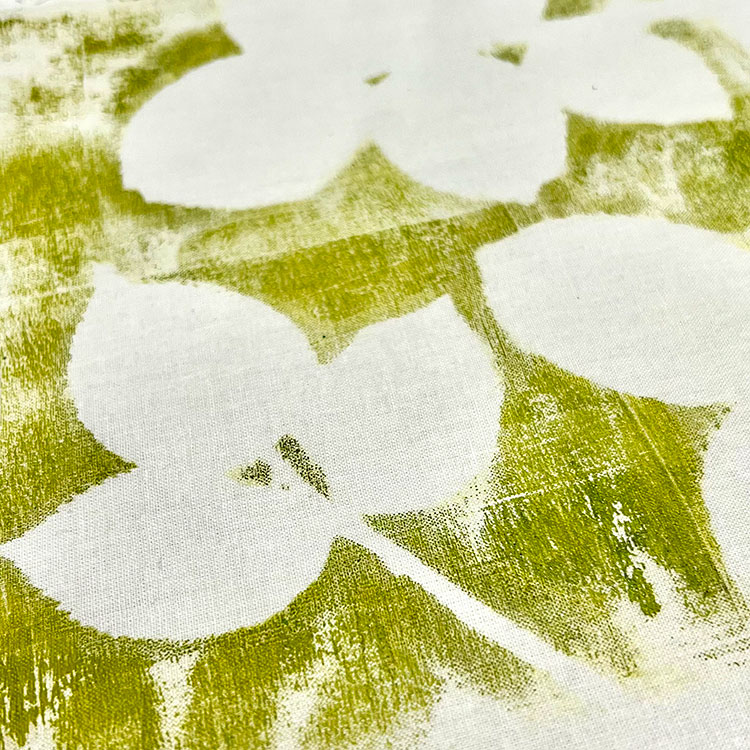
Please Note: When painting clothing you will wear, the finishing process is just as important as the design. You will need to heat set the paint after it dries by ironing it on the back side (with a pressing cloth) or running it through the dryer for 20-30 minutes or so. You also want the paint to be soft and flexible so it does when you move. When painting something I plan to wear, I prefer to use good quality fabric paints like Jacquard and Pebeo. I have heard great things about Arteza fabric paints, but have not used them as yet.
How to Turn Acrylic Paint into Fabric Paint with Textile Medium
A textile or fabric medium is a liquid binding agent that is mixed with acrylic paint, which essentially produces a thinner consistency that can easily seep into fabric. This creates a soft and flexible fabric paint that is also permanently affixed to your fabric. Now your clothing or other items will be able to move freely instead of being hard and stiff. If using acrylic paint without a textile medium the fabric will become quite stiff. This might be fine for something like a handbag or a costume that is only used once, but not for most clothing applications. This is not a big consideration when painting cloth for art purposes, although you do want it to be durable and the color to last.
Acrylic paints and mediums can be purchased from art and craft stores, other retail stores, or online. The chemical formulas used are basically the same regardless of the chosen brand. Some of the biggest names here are Liquitex, FolkArt, Golden, and Delta.
Fabric paint is typically used to color relatively small sized areas on a fabric piece. For large or entire areas of fabric, a fabric dye is usually considered the better choice. Below is a random stenciling technique with three colors of paint.
If combining several acrylic colors to create a new color, always mix them together prior to adding the medium. This option clearly offer the easiest methods for fabric painting since they are pre-made. Adding medium is a very easy and simple task.
- The best ratio for mixing acrylic paint with fabric medium is: 1 part medium to 2 parts paint (for every teaspoon of paint use use 1/2 teaspoon of fabric medium) Of course, follow the manufacturers directions when using a medium. Please follow the manufacturer’s recommended ratios.
Alternative Mediums
There are other mediums that some artists use to paint fabrics. The optional mediums available like glazing medium, which makes acrylic paint more transparent and allows for glazing techniques. Satin, gloss, and matte sheen mediums are considerations as well. Matte medium reduces the natural glossy appearance of acrylic paint by leaving a more subtle, non-reflective look. Acrylic gel mediums are often used by crafters as an additive to acrylic paint.
Note: Oil based mediums should be avoided as they do not mix well with acrylic paints.
How to Turn Acrylic Paint into Fabric Paint without Medium
You may wonder what can be done if you already have a stock of acrylic paints but no medium to add to them. Well, the answer is that you can actually create your own ‘medium’ with everyday household ingredients. There are several easy options for mixing these ingredients to produce a medium. Your self-created mediums can sometimes be as effective as most store-bought ones.
Glycerine Added to Acrylic Paint
One ingredient that can be mixed with acrylic paint is glycerine, which is a sugar alcohol that can be obtained from both plant and animal sources. It is the best way to make fabric paint that I have found. See how the paint flows into the glycerine below. It mixes easily and helps the paint flow into the fabric better. I offer two recipes with glycerine:
- Glycerine, Water, Paint. The ratios is: 1 part glycerine, 1 part water, 2 parts paint. The water helps the glycerine work better and adhere well to the cloth.
- Glycerine, Vinegar, Paint. The ratios is: 1 part glycerine to 1 part of white vinegar to 2 parts of water. The vinegar helps with the longevity of the color and reduces the chance of the mixture molding or spoiling.
Here is a finished piece created with glycerine and water added to acrylic paint:
Water Added to Acrylic Paint
One of my favorite methods of painting cloth with acrylic paint is by adding plain old water. I call it abstract watercolor. It creates a dreamy watercolor effect on light colored fabrics. The paint flows and creates surprises as you scrub it into the cloth. The texture of the fabric becomes part of the design as well. The ratio is: 1 part acrylic paint to 1-2 parts water. This is great method to experiment with and explore fabric painting.
Application of Homemade Fabric Paint
Fabric paint can be applied in several ways such as with a brush, sponge, spray bottle, or rubber stamp. Acrylic paint is water-soluble, therefore it dries well on fabric. It is recommended that you wash, dry, and iron your fabric before applying paint. Some people like to gently sand the area to be painted with light grit sandpaper. This will roughen up the fibers a bit, helping make the paint adhere well.
I have two favorite methods of painting on fabric: Stenciling and Abstract Watercolor (explained above). Below you can see how I stencil by using a small stencil brush to place colors carefully in a pattern or design. I also have a How to Stencil on Velvet with Metallics post you might like.
Here is piece of silk painted with my abstract watercolor technique and some random staring of circles.
Heat Setting Fabric Paints
Heat-setting with a dryer or dry iron will leave your fabric more washable and durable. The paint should dry first for 48 to 72 hours prior to this ‘setting’ of the paint. Iron the fabric with a medium high setting on the back of the fabric. You might want to use a pressing cloth. Painted fabric can be placed in the dryer for 20-30 minutes on a medium setting.
Alternative Textile Medium Substitutes
Here are a few optional methods I found while researching this article. I have used Floetrol with acrylic paint before, but have not tried any of the other methods.
- Floetrol is a latex paint additive that can be used similar to pouring medium for producing a matte finish. The recipe using floetrol also combines Elmer’s Glue-All mixed with acrylic paint. (1 part glue 1 part paint to 2 parts floetrol)
- School Glue and Shaving Cream. This is an interesting recipe that supposedly works well (1 part regular school glue mixed with 1 part paint and 3 parts of white shaving cream)
- Fabric softener in lieu of a medium. Fabric softeners have chemicals called surfactants that make it easier for two liquids to mix. This can be used to help thin acrylic paint by trial and error but will not work as well as an actual medium.
I hope you enjoyed learning How to Turn Acrylic Paint into Fabric Paint. You might also like my post on How to Paint with Fabric Paint. Also, check out how to get Water Based Paint out of Clothes. When I am not creating for TGF, I also create Photoshop Elements tutorials and craft project videos over on The Graphics Fairy Premium Membership site. You can find even more of my books, art, and whimsical shenanigans on my website – The Bookery.
May joy be with you all,
Rebecca
